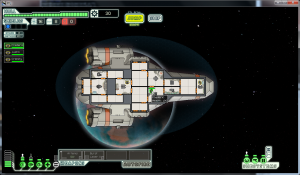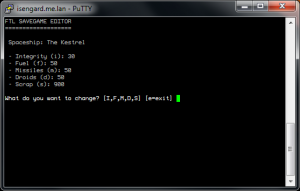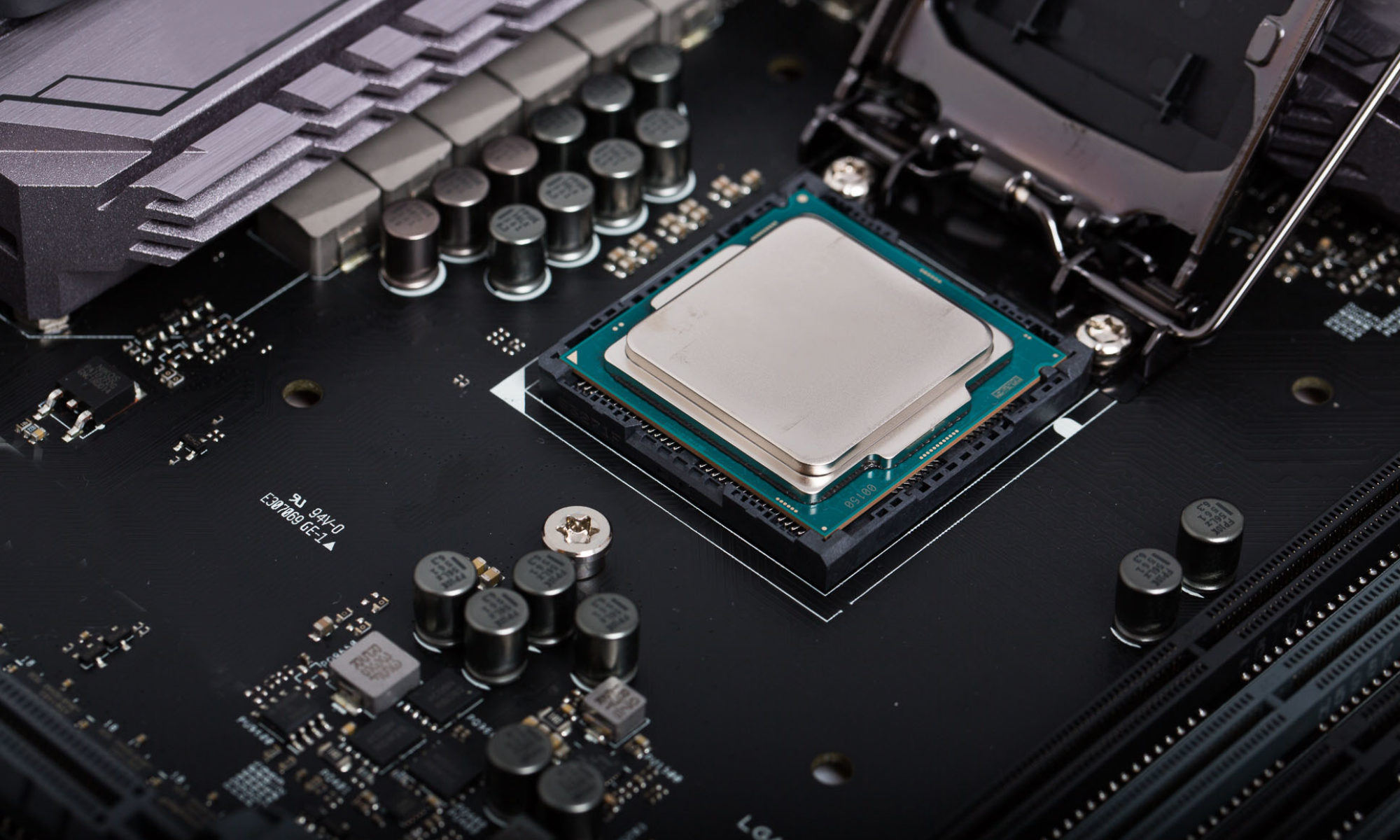Lately, I’ve spent a few hours playing FTL: Faster than Light – the spaceship simulation, real-time, roguelike-like game. One of the most challenging aspects of this game is that when you’re dead, you’re *really* dead. There is no way to continue playing, so you have to start over. Considering this game is quite difficult to finish in the first place (actually, I haven’t even finished it yet), I started looking for ways to tip the odds in my favor.

FTL allows you to save your game using a single save-slot. I suspected that this had to be written to a file somewhere, and after doing some digging I found the savegame file called “continue.sav”. The contents of this file is binary encoded in little-endian. So, in order to understand which bytes to alter in order to make the game easier, I had to reverse engineer the file format. Reverse engineering can be quite rewarding. Sort of like mentally climbing a mountain. While you’re working at it, it’s tedious and it can drive you crazy. However, when you finally make it, it is usually worth the effort!
In order to edit a binary file, you cannot use a regular text editor, as these programs parse the bytes in the binary file as ASCII. This will make the contents look like gibberish, and altering any of the contents will probably result in crashing FTL once you try to load the modified savegame.
Instead, you need a hex editor, which allows you to see and modify the binary file at byte level. Once you get a hex editor, you can fire it up and load the savegame. At first, you probably won’t make any sense out what you are seeing. To make it easier for yourself, make a copy of the savegame. Then return to the game, modify a variable and save the game again. Then, by comparing the two savegames, you should easily spot any differences.
Using this method, I quickly managed to map one third of the data in the binary file. To show an example, I have highlighted some of the byte values in the image below. The first 4 bytes contains the current ship integrity level. Second is the fuel value, followed by the number of available missiles. Finally we find the the number of droids and the amount of available scrap.

Once you have all this information, you can either manipulate the values directly in the hex editor, or you can create a savegame editor. The first is definately easiest, as you need to spend more time decoding the file format in order to make a savegame editor. Especially if the size of the savegame changes based on the content, which is the case with the FTL savegames. As an example, text strings are stored dynamically, meaning that each string in the savegame is preceded by 4 bytes telling the length of the string. Because of this, you need to decode every byte before you reach the correct offset where you can modify the ship integrity.

When you have finished decoding all the bytes preceding the offsets you want to modify, you need to apply your programming skills and create code that parses the binary file, that allows you to make modifications and that allows you to save the modified savegame. I started on one such project, written in C, which I am currently hosting on GitHub. Check it out at: http://github.com/v3gard/ftlsg.
The savegame editor is currently limited to changing the 5 basic attributes; ship integrity, fuel, missiles, droids and scrap. However, as I have mapped out a rather large portion of the binary file, I plan on adding support for changing more attributes in future versions.
If you feel like giving reverse engineering a try, I can highly recommend getting started with the FTL savegames. Mapping out the attributes listed above is not too difficult, and it is always fun learning something new!
